What are the Symptoms of Bed Bug Bites?
How to Treat Bed Bug Bites
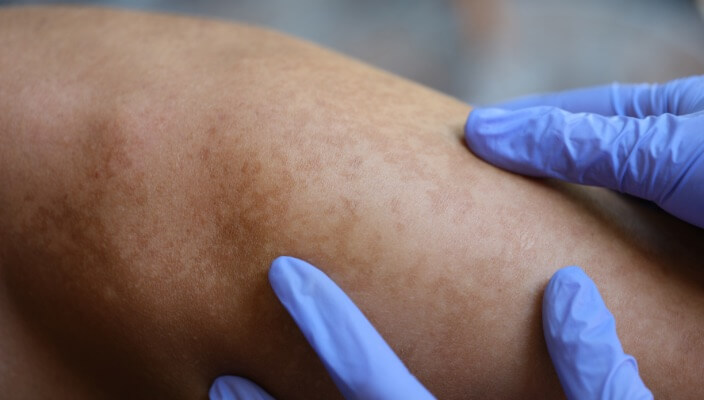
Bed bug bites can be itchy and irritating and sometimes lead to uncomfortable skin reactions. These bites often appear as small, red welts and may develop into bed bug rashes in individuals with sensitive skin.
While bed bugs don’t transmit diseases, their bites may cause significant discomfort and inflammation. If you've been bitten, understanding how to treat bed bug bites is essential for relieving itching, reducing swelling, and preventing infection.
Symptoms of Bed Bug Bites
Recognizing the signs of bed bug bites is crucial for early treatment and relief. While these bites are generally harmless, some individuals may experience more severe reactions. Understanding these symptoms can help determine how to treat bed bug bites effectively and prevent further irritation. Common bed bug bite symptoms include:
- Red, itchy bumps that appear in clusters or a line
- Swelling and inflammation around the bite site
- Burning or stinging sensation on the skin
- Development of a bed bug rash, which may cause widespread redness and irritation
- Increased itching that worsens at night
- Small blood spots or bite marks on exposed skin areas like arms, legs, and neck
Bed Bug Bites vs. Other Insect Bites
- Being bitten by an insect can be uncomfortable, but knowing the difference between bed bug bites and other insect bites is essential for choosing the right treatment. Unlike mosquito or flea bites, bed bug bites often appear in clusters or lines and tend to develop overnight. Flea bites usually occur on the lower body, while mosquito bites are more random and isolated.
- Another key factor is severity. While bed bug bites can cause itching and irritation, they are not life-threatening. However, if a bite becomes infected, swells excessively, or spreads, it may be from a different insect. Identifying the source of your bites will help you determine how to treat bed bug bites effectively. If symptoms persist, a dermatologist at Pinnacle Dermatology can provide expert guidance.
If you notice any of the following bite patterns or skin reactions, it's important to monitor your symptoms closely. If the bites worsen, become infected, or you're unsure about the cause, Pinnacle Dermatology can provide expert evaluation and treatment to help your skin heal properly.
Examples of Bed Bug Bites
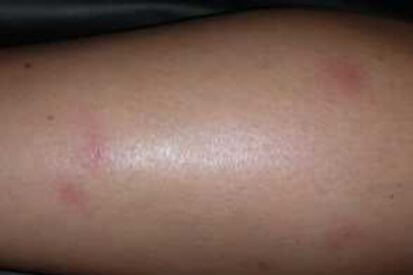
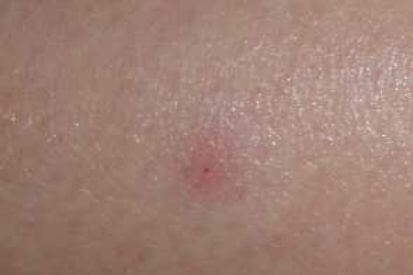
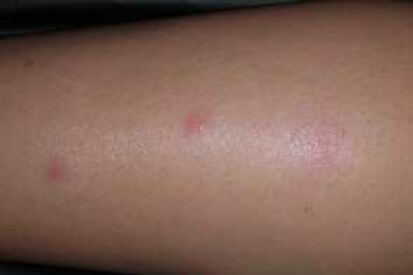
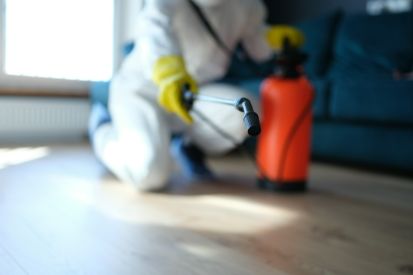
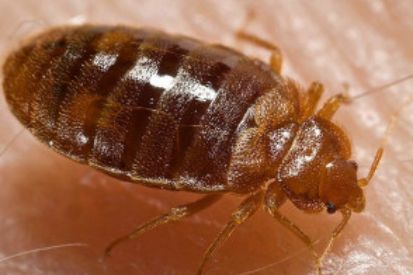
Causes of Bed Bug Bites
Bed bug bites occur when these tiny pests feed on human blood, typically while you sleep. Unlike other insects, bed bugs are expert hiders, making them difficult to detect until bites appear. Understanding the common causes of infestations can help you prevent bites and bug bite rash. Common causes of bed bug bites include:
- Travel and Hotel Stays – Bed bugs often hitch a ride on luggage, clothing, and personal belongings from infested hotels or public spaces.
- Used Furniture and Mattresses – Secondhand furniture, especially mattresses and upholstered items, can harbor hidden bed bugs.
- Shared Living Spaces – Apartments, dorms, and multi-unit buildings provide an easy way for bed bugs to spread between rooms.
- Cluttered Environments – Excess clutter offers bed bugs more hiding spots, making infestations harder to detect.
- Close Contact with Infested Areas – Public transportation, movie theaters, and office spaces can also be sources of exposure.
Skin Care Tips After Bed Bug Bites
Proper skin care after a bed bug bite is essential to promote healing, reduce discomfort, and prevent long-term irritation or scarring. While bed bug bites usually heal on their own, taking extra steps to protect your skin can make a noticeable difference in recovery.
If symptoms persist or the bites become increasingly irritated or infected, Pinnacle Dermatology can provide expert care and personalized treatment to support your skin’s healing process.
Keep the Affected Area Clean and Moisturized
Wash the bite area gently with soap and lukewarm water to remove any irritants and reduce the risk of infection. After cleaning, apply a fragrance-free moisturizer or healing ointment, such as aloe vera gel or a lotion containing colloidal oatmeal. This helps soothe the skin and supports faster healing.
Avoid Scratching
As tempting as it may be, scratching bed bug bites can worsen the irritation and potentially break the skin, leading to infection or scarring. Try using anti-itch creams containing hydrocortisone or take oral antihistamines to reduce the urge to scratch, especially at night.
Protect the Skin From Further Irritation
Wear loose, breathable clothing over the affected area to avoid friction. Avoid using harsh skincare products, perfumes, or exfoliants near the bites, as these can increase inflammation. If you're spending time outdoors, protect healing skin from sun exposure by using gentle, non-irritating sunscreen to prevent hyperpigmentation.
Use Cold Compresses to Reduce Swelling
Bed bug bites can cause localized swelling, redness, and discomfort, especially in individuals with sensitive skin. Applying a cold compress or ice pack to the affected area can help reduce inflammation and numb the skin, providing quick relief from itching and irritation.
Wrap the ice pack in a clean cloth and apply it to the bites for 10–15 minutes at a time. Be sure not to place ice directly on the skin, as this can lead to further irritation or cold burn.
Preventing and Treating Bed Bug Bites
Preventing and treating bed bug bites can help minimize irritation and protect your skin from further complications. Regularly cleaning bedding and furniture, inspecting hotel rooms for signs of bed bugs, and washing clothing in hot water after traveling can all reduce the risk of infestation.
If you've been bitten and are feeling discomfort, effective treatment for bed bug bites involves proper skincare. At Pinnacle Dermatology, our experts can provide personalized treatments to soothe irritation and keep your skin healthy. Contact us today to learn more about effective remedies and preventive care.
Frequently Asked Questions
Bed bug bites usually appear as small, red, swollen bumps, often in a line or cluster. They may resemble mosquito or flea bites and can sometimes develop into larger welts depending on the individual’s reaction. In some cases, a small puncture mark can be seen in the center of the bite.
Yes, bed bug bites often cause itching, which can range from mild to intense. The itching is a result of the body’s allergic reaction to the bug’s saliva. Scratching can worsen the irritation and increase the risk of infection, so it’s best to treat the bites with soothing creams or antihistamines if necessary.
Bed bug bites typically heal within 1 to 2 weeks. However, healing time can vary based on individual sensitivity and whether the bites are scratched or become infected. In rare cases, the redness and swelling may persist longer, especially for people with allergic reactions or sensitive skin.
Bed bugs tend to bite areas of the body that are exposed while sleeping. Common bite sites include the face, neck, arms, hands, and legs. The bites are usually found in a linear or zigzag pattern, as bed bugs often feed multiple times in one area.
No, bed bugs cannot bite through clothing. They typically seek out exposed skin to feed on. However, if clothing is loose or thin, they may crawl under it to access the skin. Tight-fitting clothes can act as a mild deterrent during sleep, but they don’t prevent bites entirely.
Bed bugs spread by hitchhiking on luggage, clothing, furniture, and other belongings. They are commonly picked up in places with high turnover, such as hotels, public transportation, or shared housing. Once introduced to a new location, they quickly hide in cracks, furniture, and bedding to reproduce and expand their infestation.
No, bed bug bites are not contagious. They do not spread from person to person through skin contact or bodily fluids. However, the bed bugs themselves can move from one person’s belongings to another's, potentially leading to more bites and further infestation.
Featured Products
Check your local office for current stock!
Check your local office for current stock!
Featured Blogs
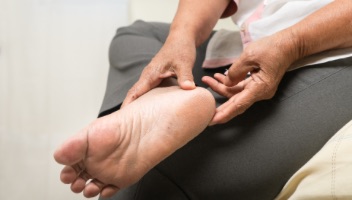
- General Dermatology
- Chronic Skin Conditions
In this blog, we'll delve into the connection between diabetes and skin health, offering insights and tips for dermatology patients to navigate this sweet challenge.
Read More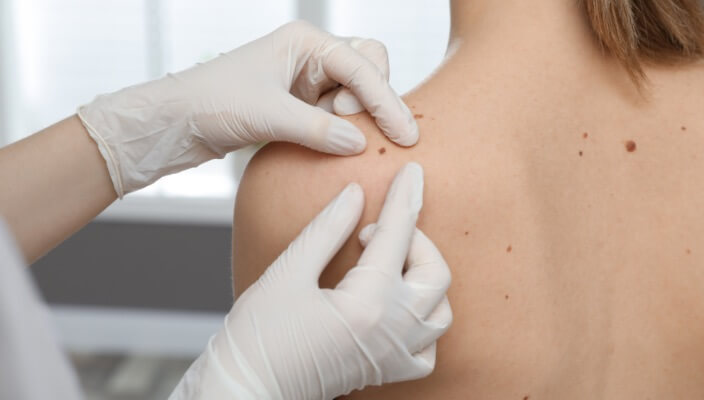
- Skin Cancer
- General Dermatology
- Skin Exams
Your skin is your largest organ and its first line of defense. Learn more about why a skin exam should be a part of your wellness routine.
Read More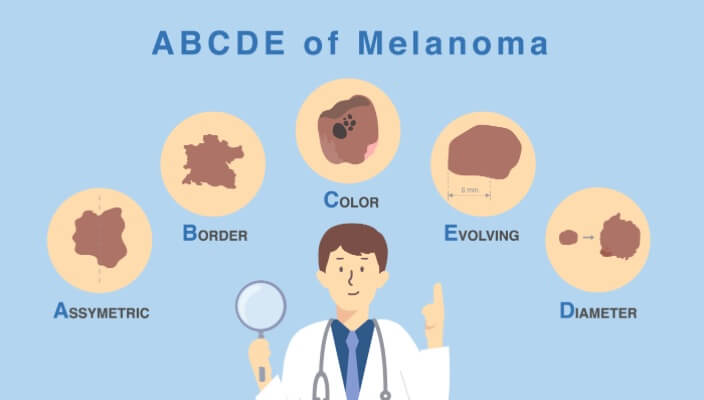
- Skin Cancer
- General Dermatology
- Skin Exams
Learn the ABCDEs of Melanoma, the deadliest form of skin cancer.
Read More


